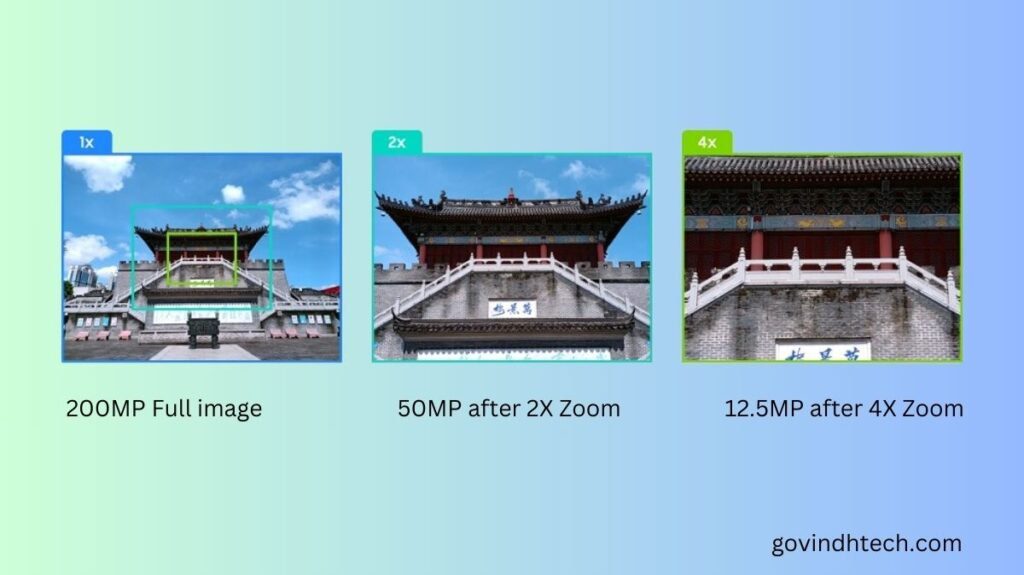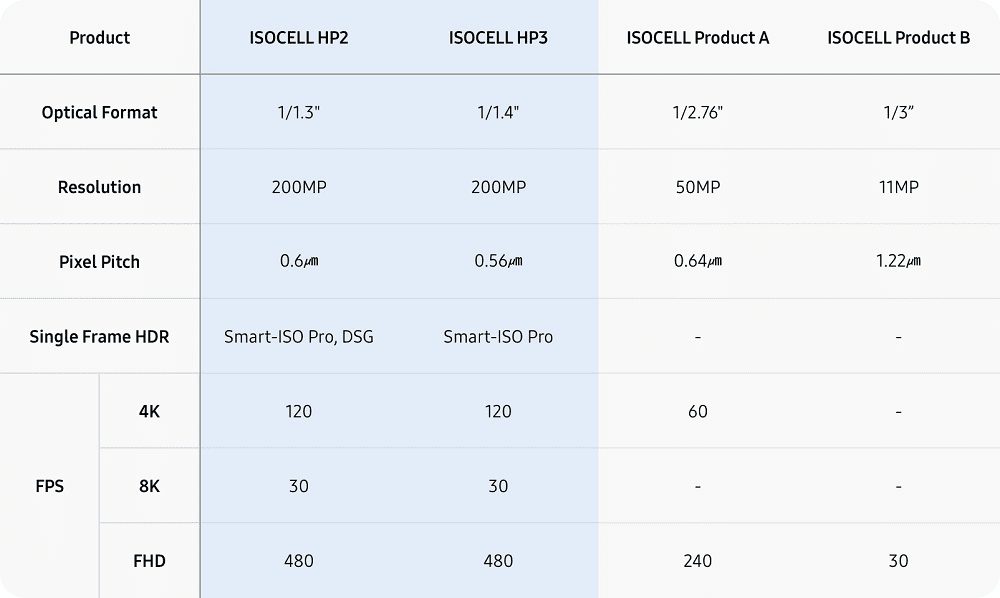Smartphone Photography Future: 200MP Telephoto Cameras
ISOCELL’s 200MP sensors and remosaic technology combine wide and telephoto smartphone cameras.
Smartphones are judged by their cameras because they are used most and can be assessed by the untrained eye. Smartphone cameras have improved rapidly in the last decade, but their small size limits them. Smartphone owners expect better cameras and thinner, lighter bodies every year. Camera bump size, device thickness, and weight are also being discussed by techies.
Telephoto sensors have improved over time, making the telephoto camera a leading solution. The telephoto camera is now the second main camera after several major smartphone makers improved it in their flagship devices. Smartphone cameras will improve due to the telephoto camera.
Telephoto cameras are ideal for portrait photography due to their advanced features. Smartphone users often take distant photos with their telephoto camera’s high magnification mode. Wide mode is typical for portraits. The field of view distorts close objects, making subject capture difficult.
The left photo shows the subject distorted by a close-up shot with the main, wide camera, which has a 24mm focal length and 84° field of view. Wide cameras distort close-ups due to their short focal lengths. When projected onto a 2D image sensor, the face centre is longer than the peripheral due to camera distance. We call this “extension distortion.” Shorter shooting distances increase facial 3D shape distance differences, increasing extension distortion.
This is why the wide camera is good for taking photos of people against a landscape (like at a tourist spot) but not people. A telephoto camera with an 85mm focal length and 29° field of view is less distorted at 3-3.5x, making it better for portraits.
Out-of-focus focal lengths help telephoto cameras take portraits. With all other variables equal, longer focal lengths shallowen depth of field. Blurred backgrounds focus the photo on the subject. A telephoto camera is better for people-focused tourist photos than a wide camera.
Telephoto camera limitations Premium smartphones primarily use telephoto cameras. These wide cameras have image sensors from 1/1.4″ to 1″, have HDR and high-speed shooting, and offer image quality suitable for their size. Telephoto sensors typically have an optical format of 1/2.7″ to 1/2″, with some exceptions. Telephoto cameras have different image quality, colour, and HDR than wide cameras. In stadiums and concert halls, telephoto cameras may struggle to take good photos and videos.
Wide vs. Telephoto Sensors
Wide cameras use ISOCELL HP2 and HP3.
TELEphoto cameras use ISOCELL A/B.
The smartphone industry faces a major challenge when telephoto sensors must match wide sensors’ specifications and functions. Fortunately, telephoto image sensor module space has increased as wide-angle sensor modules have grown larger and higher.
Upgraded telephoto image sensors allow similar shooting scenarios to wide sensors and improve portrait out-focusing. For the same field of view, larger image sensors have shallower depth of field due to longer focal lengths.
Ultra-High Resolution Sensors: Leading the ‘Second Main Camera’ Trend
ISOCELL’s ultra-high-resolution image sensors are ideal for this trend of better telephoto cameras as the second main camera. Smartphones show that ultra-high resolution image sensors’ resolution is their biggest advantage. They’re useful in smartphones without telephoto cameras. A single 200MP sensor can perform telephoto and wide roles with 4x in-sensor zoom and telephoto-like image quality.
ISOCELL’s 200MP sensors’ superior remosaic algorithm allows 2x and 4x in-sensor zoom without compromising resolution. The 4x zoom scene above has image quality comparable to an optical 3x module, making optical zoom systems unnecessary.

By rearranging colour pixels into an RGB Bayer pattern, a 200MP sensor can maintain 12.5MP at 1x/2x/4x zoom without losing resolution. Smartphone main wide cameras default to 12MP at 1x mode, so this technology lets users get the same resolution at 2x/4x zoom.
The 200MP ISOCELL HP2 and HP3 use deep-learning-based remosaic to reproduce scene-optimized details in zoomed shooting. A flagship application processor (AP) like the Snapdragon Mobile Platform and parallel computation internals like DSPs and GPUs have improved image quality and synergy.
Advanced image quality technologies are built into ultra-high resolution image sensors, which are the main sensor. Tetra pixel sensors merge up to 16 neighbouring pixels to improve low-light image quality. They boost FPS and HDR. The large 1/1.3″ to 1/1.4″ optical format provides superior out-focus compared to traditional telephoto sensors.
With these benefits, 200MP ISOCELL image sensors are breaking the barrier between wide and telephoto cameras, enabling consistent main and sub camera image quality and innovative flagship smartphone user experiences.
A 200MP sensor on a 3x telephoto module allows lossless zoom from 3x to 6x to 12x. This impressive feature lets you capture more diverse scenes without losing resolution. Daily and tourist users often want to capture the entire foreground and zoom in on the buildings below. Moving a few steps changes the image from the previous wide angle when the subject is farther away.
User frustration is caused by low-resolution telephoto sensors and smartphone cameras’ lack of zoom when getting close to subjects. Ultra-high-resolution image sensors in telephoto cameras let users take more accurate, colourful photos from the same spot and angle.
ISOCELL Sensor Lineup Ready for Market
Premium smartphone cameras use larger optical formats, making image sensors (1/1.3″ to 1/1.4″) suitable for future telephoto modules. That application suits ISOCELL HP2 and HP3 200MP sensors.
Both sensors are in production for several smartphone models and meet premium wide sensor image quality, autofocus, HDR, and FPS requirements. Despite differences, both sensors use a 4×4 software deep-learning remosaic algorithm for 2x/4x lossless zoom and 4x on-chip crop zoom.
ISOCELL’s 200MP sensors’ zoom in existing devices demonstrate ultra-high resolution’s value. As premium smartphones prioritise user experience over hardware, ISOCELL’s ultra-high resolution sensors will revolutionise zoom with epic details.



[…] super-slow motion video, RAW continuous burst mode, and 8K video capture and playback, 360-degree cameras and videos, multi-channel Internet of Things devices, and automotive entertainment systems are […]
[…] addition to its impressive speeds, the Canvas React Plus SD offers professionals in the photography and videography fields a reliable solution for handling the demands of high-resolution content […]
[…] In a recent update on the impending flagship camera phones, the attention has now been placed on the Vivo X100 Pro Plus, which has shown a camera innovation that has never been seen before: the 200-megapixel Periscope Telephoto. […]